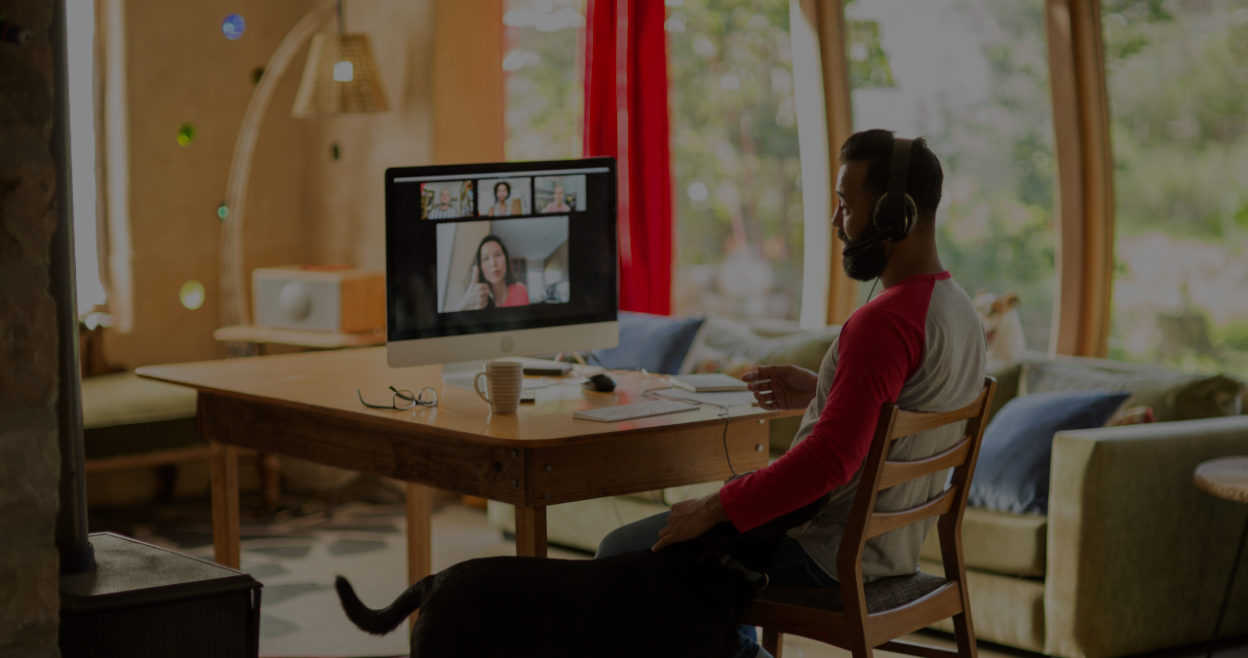The pandemic continues to affect every corner of the world. Some regions have their highest infection rates so far, while the virus appears to be more controlled in other areas. Facing these varying circumstances, global companies are taking a localized approach to returning employees safely to the office.
But not everyone is lining up to get back to their cubicle. Many employees have expressed a desire to continue to work from home. Others wish to work a few days from the office and the rest from home.
Leaders from Box, Google and VMware shared thoughts on different policies and factors businesses should consider to support a safe, hybrid work environment.
https://youtu.be/y-SE2iAM4ls
1. One Size Will Not Fit All
Put simply, hybrid work is all about enabling seamless collaboration with employees – whether those interactions take place in-person, in an office, or remotely from home or another location. When it comes to supporting a remote workforce, one size will not fit all.
“The hybrid work model is going to look different for every organization. It may even look different for different groups of employees working at the same organization,” commented Shankar Iyer, general manager of VMware’s end-user computing business.
He said businesses must prepare to support multi-modal work styles. Employees will expect their employers to provide them with the tools and technology they require to be productive from anywhere.
Scott Porter, managing director for Chrome Enterprise at Google, shared, “Our return-to-office strategy is centered around flexibility. We anticipate 60% of Google employees coming into the office in a hybrid manner – maybe 3 days in the office and 2 from home. Another 20% are likely to choose a new office location to work from. And the final 20% are likely to permanently work from home. I think this situation typifies the type of outcome we will see across most companies in the future.”
2. Equality of Experience
Varun Parmar, former chief product officer at Box, believes that the most important thing an enterprise can do to support its hybrid workforce is to deliver a great user experience – no matter how or from where an employee logs in. Those that do not deliver in this area will see talent leave in hordes, he warned.
He also cautioned companies to not leave anyone behind when it comes to delivering a great experience to a globally distributed team. “In this new world, you cannot presume every team member of a global team is going to be present for every meeting,” he said.
Parmar predicts this will give rise to a new technology stack that allows for both synchronous and asynchronous collaboration. “This will enable an equality of experience. It is critical that teams think through how meetings are recorded, documented and shared out with all team members in a way that is accessible, searchable and secure.”
3. Employee Experience Is a Security Feature
Even the most seasoned security professional will squirm with all this talk about giving employees seamless access to more resources from anywhere. To ease concerns about maintaining security while providing employees with access to critical apps and resources, new security models are emerging.
Iyer explains, “Traditional security tools like VPNs and firewalls are insufficient or incomplete. The modern security model that is being propagated is a zero-trust security model where you can secure the entire distributed edge. This helps not just IT but employees too. Afterall, if IT doesn’t have the right security policies and model in place, they can’t deliver great experiences to employees.”
Iyer hits on an important point. Providing a great user experience while locking down corporate assets are often inaccurately positioned in opposition of one another. Folks at Box see it differently too.
“At Box, one of our fundamental concepts is ‘user experience is a security feature.’ If you don’t deliver a great user experience, employees will look for easier workarounds. This introduces shadow IT and increases risk in the enterprise,” Parmar commented.
4. Foster Productivity, Not Burnout
All three leaders recognize the move to remote work meant less hours in the office, but ultimately more hours logged online. While productivity has been sky-high, they have remained steadfast in making sure employees are not stretching themselves too thin between work and personal engagements.
Parmar says, “Instead of listening to your favorite podcast on your commute home, you are now sitting in a virtual meeting. Meeting fatigue is a real thing. And as leaders, we cannot turn a blind eye to it.”
One way Box is combating employee burnout is implementing Fresh Air Fridays. Once a month, employees enjoy a long weekend. The hope is that employees use the time to disconnect and reenergize, so they come back to work on Monday ready to reengage.
Google and VMware have similar policies in place where employees can take “reset days” or “pandemic leave” in addition to their usual paid time off programs.
Porter believes having the right computing devices (he recommends a Chromebook with built-in LTE wireless capabilities) will help employees make the transition to the “next normal.” He explained, “As COVID restrictions have lifted and you are out and about – say getting your car serviced at a garage – you can actually be productive at the same time. This will help employees better balance work with personal commitments.”
5. Bring the Lessons of 2020 with You
While a challenge for many companies to implement overnight, remote work has had its benefits. So many, in fact, that it’s a widely held belief that it is here to stay for good.
From a business standpoint, we are getting talent from places we’d never imagine we’d be able to recruit from. Those people have been incredibly productive and made a huge impact on the organization.
Shankar Iyer, General Manager, End-User Computing, VMware
Talent acquisition is one area Iyer believes is forever changed – for the better – due to the shift to remote work. He said, “From a business standpoint, we are getting talent from places we’d never imagine we’d be able to recruit from. Those people have been incredibly productive and made a huge impact on the organization.”
Parmar speaks of a philosophical shift that will drive Box forward in the future. “We’ve adopted the philosophy ‘work is what you do, not where you do it’ and we want to enable Boxers with choice. We believe the world is moving toward a hybrid workplace and we want to make sure at Box we are supporting both remote and in-person collaboration.”
Leaders at every organization – no matter the size or industry – are grappling with when and how to safely return employees to physical offices. Every solution will look different and supporting a hybrid workforce will require constant evaluation and adjustment along the way. For more tips from these leaders, watch the full conversation replay.



